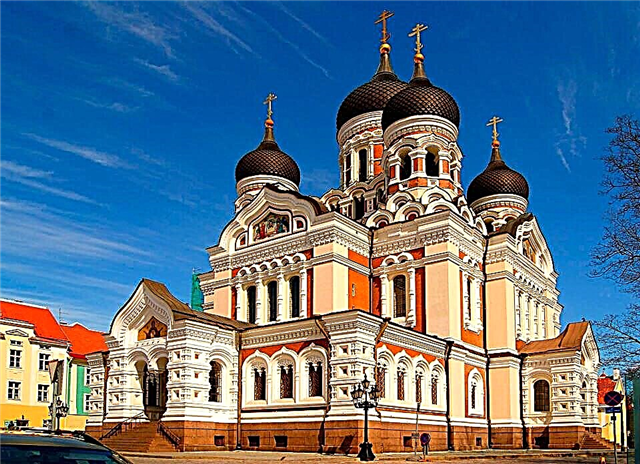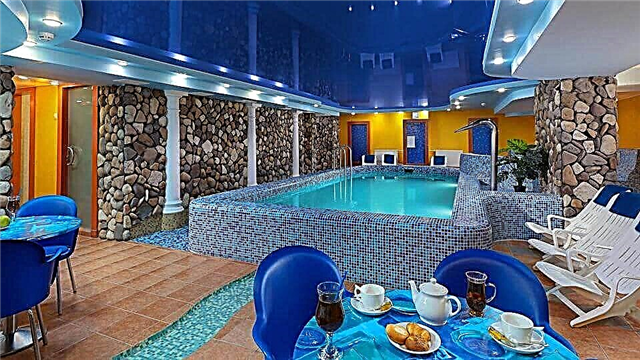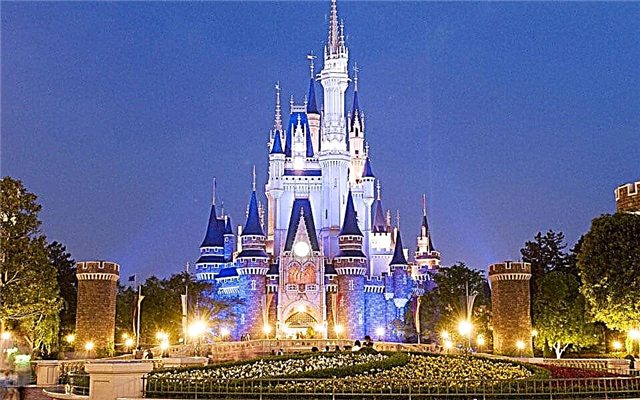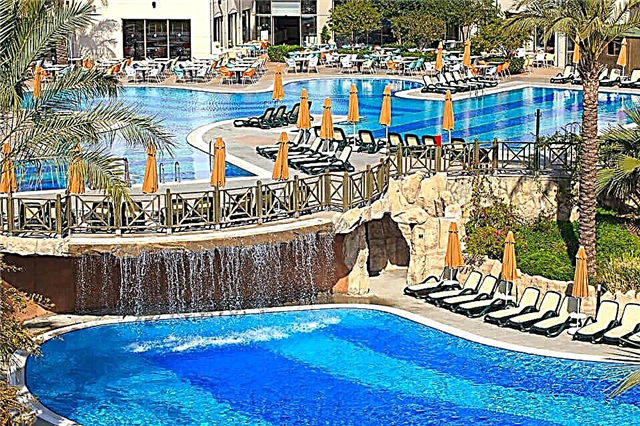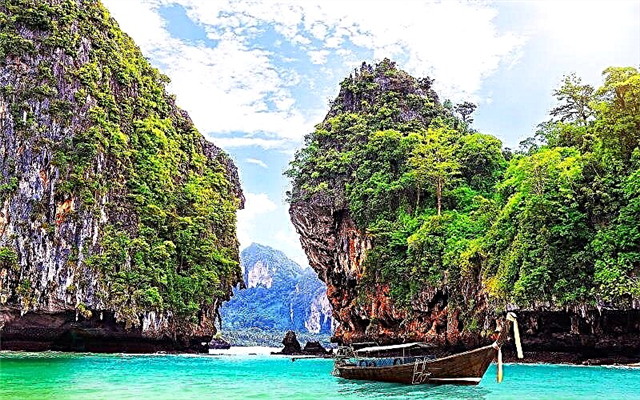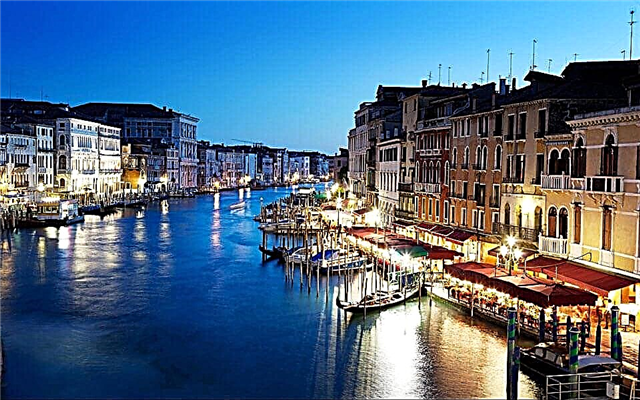More and more tourists are using this option - to fly to Italy, rent a car and travel around the country. This makes it possible to independently plan the route, not to depend on the guide, to see exactly what interests you. Of course, there are so many attractions that you shouldn't even try to cover everything at once. It is best to plan a visit to several large cities, and at the same time look into small towns and picturesque villages that come across along the way. So, what to see in Italy by car yourself?
The advantages of car rental

Italy is one of those countries that are very convenient for independent travel. Renting a car will be inexpensive here. If you go not during the peak tourist season, it is quite possible that you will have to pay a small amount per day for a car. But this gives undeniable advantages. Autobahns in Italy are excellent, travel is very convenient. You will see not only the cities that you planned to explore, but on the way you will be able to appreciate both natural attractions, which are many in Italy, and small settlements.
Also, you will stay in each city or settlement as long as you need to get to know it. For the largest cities with a large number of museums, it is better to set aside three days, for the rest it will be enough for days. What do you need to rent a car? The driver's age must be between 18-75 years old, a driving experience of at least a year is desirable. You will also need a passport, driver's license, credit card and a voucher, which will contain the details of the booking. It is worth carefully studying the details of the lease, so that later there are no questions.
What city should you start your trip from? Of course, this is Rome.
Book a private transfer from the airport to your hotel in Rome for RUB 3,723
Rome

You need to set aside a few days to explore the capital. There are too many cultural monuments in Rome that you simply cannot miss. Accommodation here can be chosen for every taste and budget, but you will be able to fully appreciate the main city of Italy.
So, what you need to see is a must:
- The Colosseum is an amphitheater built in the 70s AD, which has already become the hallmark of the country. From emperors to plebeians, the Colosseum saw all strata of Roman society;
- St. Peter's Square is the gateway to the Vatican State. According to legend, it is here, in the basilica, that the Apostle Peter is buried;
- St. Peter's Cathedral - the beauty of this building is amazing. The cathedral has no analogues in the world. Shown here are works by Michelangelo;
- The Pantheon is an ancient Roman structure, erected in 118 AD, decorated with magnificent sculptures;
- The Trevi Fountain - the largest in Rome, was built in the middle of the 18th century, a real masterpiece dedicated to the god of the Ocean;
- The Spanish Steps - in the Baroque style, built in 1725, connects the squares of Rome. Here, even at dawn, you can see tourists sitting on the steps.
In addition, you should definitely visit the main museums of the capital, Hadrian's Mausoleum, the Roman Forum, the Sistine Chapel, where frescoes by Michelangelo and Botticelli are displayed, the ancient Palatine Hill (where the construction of Rome began), the Borghese Gallery, which is one of the best art centers. And, of course, you just need to wander the streets of Rome, go to cafes and shops, feel the spirit of the Italian capital.
Naples

Naples attracts not only tourists, but also the indigenous people of the country - the richest cultural heritage of Italy is concentrated here.
- Royal Palace - built since 1600 - and more than half a century. An interesting architectural object, which houses the National Library.
- Castel Nuovo is a 13th century castle and was supposed to be a royal residence.
- The Archaeological Museum is the largest in southern Italy.
- Cathedral of Saint Januarius, dedicated to the patron saint of the city. A vessel filled with his blood is kept here.
- Gallery Umberto I - built in the 19th century, there are many prestigious trade establishments.
- Castle of Sant Elmo - dating back to the 14th century, built in the shape of a star. A magnificent view of the city opens up from here.
- Capodimonte Museum - here you can see a rich collection of paintings and sculptures.
- Church of Santa Chiara - This complex includes a beautiful 14th century monastery. People come here from all over Italy, as there is a belief that newlyweds who are married here will live happily in marriage for many years.
- The Opera House is the oldest in Europe, opened in the first half of the 18th century, and is one of the main architectural landmarks of the country.
And of course, while in Naples, you will see Vesuvius, the last eruption of which took place in the middle of the 20th century.
San marino

The capital of the mini-state is located on the top of Mount Monte Titano. Here you can see old streets, houses and towers. One of the main attractions of San Marino are the medieval towers of Guaita, Cesta and Montale. What else deserves attention?
- Palazzo Pubblico (town hall) - stands on Freedom Square. The neo-Gothic style is worth admiring. And also see how the changing of the guard takes place;
- Basilica - the relics of the founder of the city are kept here, the basilica is the main temple of San Marino;
- The Church of San Francesco is one of the oldest religious buildings. The temple was erected in the middle of the 14th century.
There are also many interesting museums in San Marino. Which one to visit depends on your preferences. For example, the National Museum has a rich collection of antiquities and medieval paintings. The Wax Museum will interest both children and adults, etc.
We recommend:
Rimini

Perhaps those who come to Rimini will want to stay here. Nearby is the famous Rubicon River, which was crossed by Caesar.
- Tempio Malatestiano - 15th century cathedral built by the prominent Renaissance architect Leon Alberti;
- The monuments of Ancient Rome are represented by: the Arch of Augustus (once it was the main gate), the bridge of Tiberius during the times of the emperor Augustus and the House of the Surgeon, where a box with surgical instruments was found.
Also in Rimini, it is worth visiting the Square of the Three Martyrs, taking a walk in the historic center, taking pictures at the memorial pillar erected in honor of Caesar's crossing over the Rubicon. And also this city is the birthplace of Federico Fellini. Later, when the famous director came here at the zenith of fame, he always stayed at the Grand Hotel. Nearby is the Four Horses Fountain. It is also worth seeing the “Italy in Miniature” park where models of the country's sights are presented.
Bologna

Founded by the Etruscans about 500 BC. And, of course, there is something to see here.
- Basilica of San Petronio, built at the end of the 14th century, is one of the largest churches in the city;
- Arengo Tower - located in the historical part of Bologna, built in the 13th century. The bell tower of the 15th century attracts attention;
- The Prendiparte Tower was built even earlier - in the 12th century, its height is 60m. Several centuries later, it began to act as a prison;
- The university is the oldest in Europe and a must see. Suffice it to say that Dante, Petrarch, Copernicus studied here. Today, the university has about 90 thousand students;
- The Moline Canal is one of the most beautiful corners of the city and makes you remember Venice. There are old buildings around, which creates an additional impression;
- The Cathedral of San Pietro is a cathedral and dates back to the 16th century. There are magnificent paintings inside. The pride of the cathedral is its bells.
Falling towers of the 12-14 centuries, Piazza Maggiore and Piazza Neptuno squares, numerous temples - it is better to spend a few days to explore the sights of Bologna. It is also worth remembering that the cuisine here is amazing. Bologna is home to the famous Bolognese sauce.
Venice

Everyone has heard of Venice. It is located in the north-east of the country, its historical part is located on the islands. It is deservedly considered one of the most beautiful cultural centers in the world. From here you can bring magnificent souvenirs, jewelry, carnival masks. The gondola ride and the seafood-dominated Venetian cuisine will also be remembered for a long time. It is worth visiting the area where artisans work and buying the creations from hand. Venice has plenty of museums, theaters and picturesque squares.
Must-see places:
- Piazza San Marco (including sightseeing)
- Grand canal
- Doge's Palace
- Bridge of Sighs
Also, bright holidays are held here, which is worth one Venice carnival!
We recommend:
- Curiosities, legends and myths - a sightseeing tour: not historical events and dates, but unusual and exciting city stories
- Living Venice - an easy, creative and soulful walk in the company of an opera singer
- Instagram walk through authentic Venice - learn about the city's past and capture its present
- Panoramas of Venice - see the city from water, land, bird's eye view - and visit iconic and non-tourist places
Verona

One of the most romantic cities in Europe, it is no coincidence that Shakespeare settled Romeo and Juliet here. Although Verona is primarily associated with the name of the great poet and playwright, there are many other attractions here.
- Arena di Verona - a huge amphitheater from the times of Ancient Rome, built of marble
- Castelvecchio Castle - 8th century Gothic castle that once served as a fortress
- Arches of the Scaligerians - the tombs of those who ruled Verona in the 13-14 centuries
- Archaeological Museum - was opened at the beginning of the 20th century on the territory of the monastery. Here are the many finds from the area
- Basilica of San Zeno Maggiore - a true architectural masterpiece of the 7th century, built using pink marble
- Lamberti Tower - visible from anywhere in Verona, because its height is over 80m, located on the site of the Roman Forum
- Juliet's house and her sarcophagus - lovers come here. They leave their autographs on the walls of the house, and crumbs of marble from the sarcophagus are considered lucky souvenirs.
We recommend:
- Verona from A to Z - explore the sights and see the city through the eyes of the Italians on a fun sightseeing walk
- Verona: first date - see the iconic places of the "city of love" and learn its legends
- Wine and Gastronomy Journey: Secrets of Amarone - Sommelier Short Course, Wine Tasting in the Cellars and Walk through the Picturesque Amarone Vineyards
Bergamo

Here you can admire the gardens and parks, numerous attractions. Here Garibaldi's army fought for the independence of Italy, and many famous people of the country lived, loved and worked here. The Old and New Town Halls on the main square are worth seeing.
- The bell on the Civic Tower in the evenings beats off hundreds of beats - this has been the custom since time immemorial, when the city gates were closed at night. You can go upstairs - by stairs or by elevator - and admire the surroundings;
- Fountain Contarini - played a historical role, in which the inhabitants of Bergamo drew water during enemy sieges;
- Cathedral Square - there are the Cathedral, the Basilica of Santa Maria Margiore, the Baptistery.
The masterpiece of Bergamo is the Colleoni Chapel, built in the 15th century.
Milan

Milan is over 2.6 thousand years old. And he is rightfully proud of his rich history. What do you need to see?
- Duomo Cathedral - 6 centuries under construction, starting from the 14th century. Magnificent decor, numerous statues, an observation deck - all this attracts tourists. In total, the cathedral can accommodate up to 40 thousand people;
- Gallery of Victor Emmanuel II - built in the 19th century, is a passage in the shape of a cross. Beautiful mosaics, trendy shops and restaurants can all be seen inside. It also hosts exhibitions and concerts.
- La Scala Theater is the most famous in the world. However, you can appreciate its magnificence only after getting inside. The greatest singers sang on this stage.
We also recommend visiting the theater museum.
We recommend:
- Portrait of Milan - Informative sightseeing tour with a professional guide and Italian lunch
- Famous and unknown Milan - do not miss all the main things and see unusual sights
- Evening promenade - get to know the openwork city in the rays of the setting sun and feel its atmosphere
Genoa

A picturesque old town, one of the largest Italian ports. There are many sights worth seeing here.
- Garibaldi Street - began to be built up back in the 16th century with houses of wealthy townspeople. And today you can admire them, look at the family coats of arms. A number of palaces are available for visits;
- The Cathedral of San Lorenzo is a beautiful building that was founded in the 12th century and has been rebuilt several times since then - from the Romanesque style to the Renaissance. Here are kept particles of the ashes of John the Baptist and a dish on which the head of the saint lay;
- Santi Ambrogio is a 16th century church, one of the most beautiful in the city. Here you can admire Rubens' paintings;
- Church of San Matteo is another beautiful old church that was built in the 13th century and is richly decorated with marble. Keeps many exhibits related to the history of Genoa;
- Genoese Aquarium - was built at the end of the 20th century. Children will love it here;
- The harbor is a huge port where you can see both large ships and many yachts.
And if you look into the territory of the Old Port, then look at the places where ships were stationed in the Middle Ages.
We recommend:
- Walls that know how to tell - the author's format for a sightseeing tour of Old Genoa
- Genoa in the palm of your hand - lifts, funiculars, lifts, stairs - the most interesting on the best verticals of the city and between them
- Signora Enrika's Cooking Class - Make Ligurian Pesto and Anchovies and Learn the Secrets of Italian Cuisine
Pisa

Although, in the minds of people, this city is primarily associated with the famous Leaning Tower of Pisa, there is something to see and besides it.
- University - was built in the 12th century, and a century later, it was recognized as an educational institution. Galileo Galilei studied here. In the Botanical Garden, which forms a single complex with the university, you can admire very beautiful flowering plants;
- The Leaning Tower of Pisa was built from the 12th to the 16th century, at the end of the 20th century, an expensive reconstruction was carried out. Tourists are allowed to enter the tower in small groups, the ticket price is quite high;
- Camposante Monumentale is a cemetery where only famous people were buried. The place is considered sacred, since a capsule with earth brought from Mount Golgotha is buried here.
The National Museum is also worth visiting - this building was first a monastery, and later the king's palace. The Museum of Ancient Ships is also of great interest.
We recommend:
- Love at first sight - to see the iconic places of the city and learn their history on a rich sightseeing tour
- "How the Pisans built a tower" - an excursion-game on the Square of Miracles with interesting tasks for children and stories for their parents
- Pisa is not only a leaning tower - a sightseeing tour of the beautiful and underrated sights of the Plaza of Miracles
Spice

Located on the shores of the bay of the same name. It is mentioned in documents since the 13th century, later it becomes a major trade center. Today it is very popular with tourists because of the wonderful climate, numerous events, and, of course, beautiful old buildings.
- The Museum of Liguria is housed in a 13th century castle.Once upon a time, these massive walls protected the inhabitants during the attack of enemies. Here you can see exhibits dating back to different eras. It is also worth visiting the chapel of St. Anastasia;
- Ethnographic Museum - will be of interest to everyone who is keen on the history of religions, and also wants to look at household items dating back to the 18-20 centuries;
- The Museum of Contemporary Art is one of the youngest. There are many paintings and sculptures created in various genres - from abstraction to expressionism;
- Sanctuary of Madonna del Olmo - the temple was built in the 19th century on the slope of Mount Santa Croce. It looks especially beautiful inside.
The best way to get to this place is by car.
Florence

You must definitely come to Florence for a few days. For one, you can hardly see even the top of this "iceberg". There are no less attractions here than in Rome.
- Cathedral of Santa Maria del Fiore - more abbreviated name Cathedral of St. Mary. Luxurious facade and interior decoration that is not inferior to it. The paintings of Donatello and Michelangelo, the observation deck - all this is amazing;
- Cathedral Square - only here you can spend a whole day looking at priceless monuments. The buildings of the town hall, baptistery, cathedral are an unforgettable sight;
- The Uffizi Gallery is very popular with tourists. Here you can see paintings by Leonardo da Vinci, Botticelli and other great artists;
- Palazzo Pitti is a complex whose center is a palace. There is a beautiful park and numerous exhibitions;
- Ponte Vecchio is the famous old bridge over the Arno. Especially beautiful in the evening when the backlight is on;
- Basilica of St. Lawrence - the church of the Medici family, some members of the family are buried here;
- Academy Gallery - dates back to the 16th century. The most valuable paintings and sculptures are kept here;
- Giotto's bell tower is a real gem of architecture. You can climb up the stairs. The height of the bell tower is over 80m;
- Palazzo Vecchio - at first it was a fortress, and then a real palace that belonged to the Medici. Today the town hall is located here. However, you can see some of the rooms and see the magnificent works of the masters of the Renaissance.
And, of course, the streets of Florence are also a kind of open-air museum.
We recommend:
- Florence Through the Eyes of the Florentines - Top Attractions, Hidden Signs and Real City Life on a Group Tour
- Morning in Florence - take a walk without the hustle and bustle at the very beginning of the day and see the main attractions
- Group sightseeing walk in Florence in the evening - see iconic locations, hear the history of the city and learn the mentality of the Florentines
- Secrets of the Uffizi Gallery for everyone - understandable and interesting about the world of masterpieces of the main museum
Arezzo

It is located just 80 km from Florence and stands on the same river Arno. It is recommended to look here:
- Piazza Grande is a square dating back to the Middle Ages. Each building that looks out here has a rich history. For example, you can see a 16th century bell tower with an old clock on it;
- Pieve di Santa Maria - a church built in the 13th century, the oldest building in the city. An excellent example of the Romanesque style. It will be especially interesting to see the crypt;
- The Duomo is a cathedral dating back 7 centuries. Magnificent stained-glass windows, relics of saints, religious treasures - all this attracts pilgrims here;
- San Domenico is a 13th century church. Famous for its bells and frescoes;
- San Francesco is also a church of the same era with world-famous frescoes;
- The Vasari House is an old architect's house. Michelangelo's letters are kept here;
- The Pretorio Palace is a 14th century building. Once there was a prison, but now there is a library. You can admire the coats of arms and bas-reliefs that adorn the facade of the palace for a long time.
Orvieto

Quiet beautiful city, arriving here, you will definitely find yourself in the Middle Ages. The sights are located compactly, they can be viewed in one day.
- St. Patrick's Well - Built in the 16th century to supply water to the defenders of the local fortress. Its dimensions are impressive - over 60 meters deep and 13 meters wide. Down you can go down the stairs and stand on a special platform. Tourists throw coins "for luck" at the bottom of the well;
- Albornos Fortress - the ruins of an ancient fortress, from which little remains. But even these ruins look picturesque. There is a park nearby;
- Cathedral - stands on a small square. Has features of both Romanesque and Gothic styles. Construction began at the end of the 13th century. Here you can see exquisite frescoes, magnificent mosaics, luxurious decoration;
- Cathedral Museum - visiting it, you will see a collection of works of art from the Middle Ages, and sculptures made by Emilio Greco;
- Underground city - you will travel to the dungeons where drinking water and wine were stored. The tour is impressive.
From Orivieto it will be convenient to return to Rome. Few tourists manage to explore all the listed cities of Italy during one car trip. But there is an opportunity to plan a route on your own and visit 5-6 of them, which you especially want to visit. And leave the rest for the next trip. The cultural values of the great country are so numerous that you can get to know them for a long time. The most convenient way is to hit the road in a rented car and see the sights without haste and in comfort.

